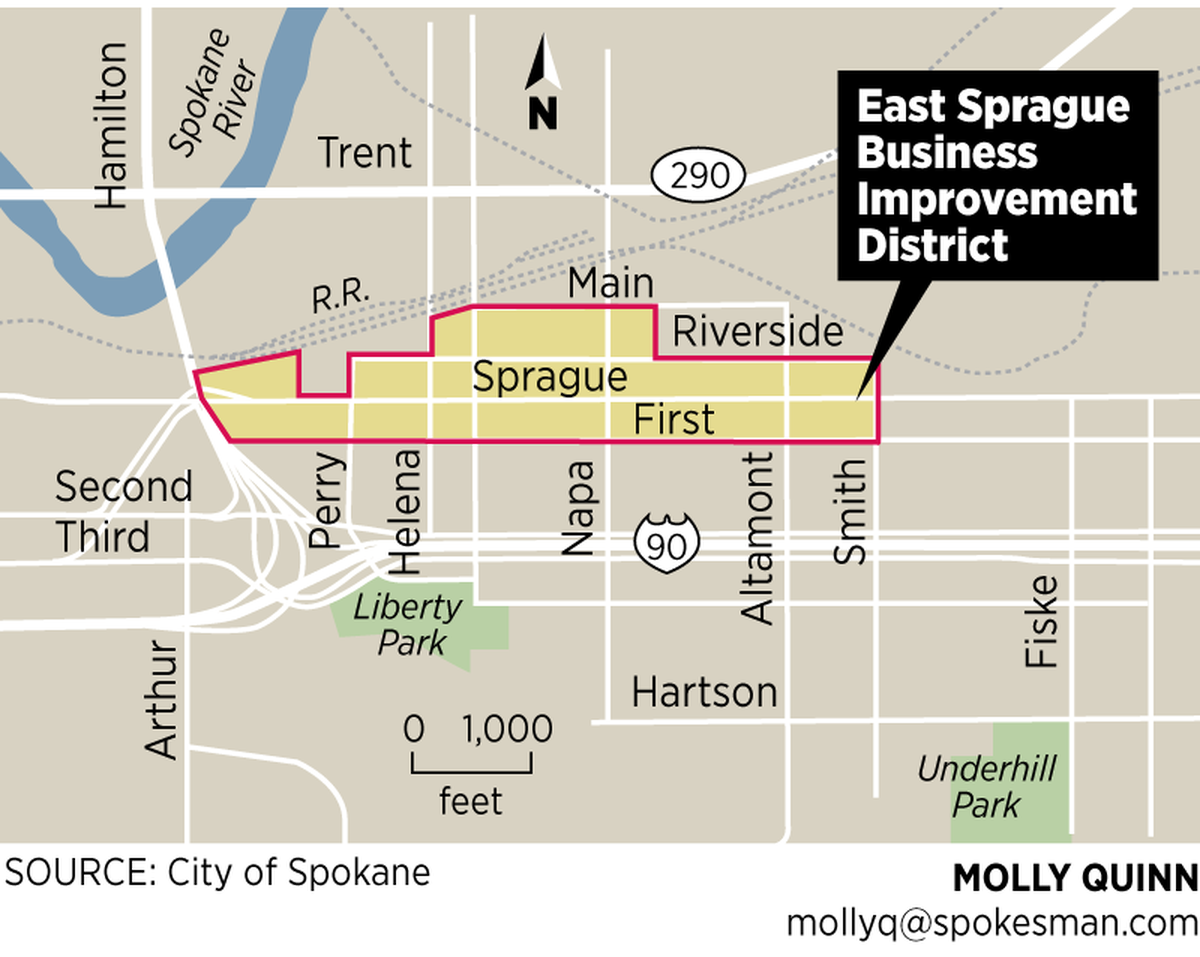Sprague revitalization efforts get boost with taxing district

Kristen Ward was lost and took a wrong turn. She didn’t mean to end up on East Sprague Avenue, but now, two years later, she’s still there.
“Literally overnight I had a business,” she said, referring to the Ivory Table Cafe and Catering Co., a crepe and sandwich lunch spot on Sprague near South Magnolia Street that doubles as her catering headquarters. Her plan to buy a “friend of a friend’s” catering business had fallen through, and her accidental trip on Sprague was “kismet,” she said.
“People told me you’re not going to make it on East Sprague,” she said. “Watch me. Besides, the price was right. It’s a cheap area to get into.”
Ward, who said her business’ profits increased nearly 100 percent over the past year, is just one of many who hopes that changes. The effort to lift up Sprague moved forward last month when the Spokane City Council approved a request by a majority of East Sprague business and property owners to create a business improvement district, a self-taxing zone that raises money to fund projects within the area. For East Sprague, that means more help to keep the streets clean and remove graffiti, more security and a drive to promote the area as a place to eat, shop and live.
Revitalizing this deteriorating part of Spokane has been a goal for decades, ever since Interstate 90 was built, tearing through the neighborhood and taking 1,000 homes in the process. Before the transcontinental highway arrived, Sprague was the way into and out of Spokane.
In recent years, however, promises from the city to target investments in street improvements and home rehabilitation, a steady amount of work from neighborhood volunteers to keep the streets clean and a renewed effort to curb crime and prostitution have focused attention on Sprague.
Ward, for one, said she’s already seen crime and prostitution plummet in her two years on Sprague. And Councilman Breean Beggs said that trend will continue as more businesses find success there.
“It’s so close to downtown, and people and our demographics are changing,” Beggs said. “People want to live downtown. It’s relatively inexpensive to purchase real estate down there on Sprague.”
Beggs said the new business district will augment services the city already provides, and eventually the area will have services similar to downtown: clean and green teams, security ambassadors and flower pots on streetlights, to name a few.
“It’s an emerging place, so let’s focus our energies there,” Beggs said, adding the business district will “make believers out of people” for Sprague.
Though neighborhood residents and advocates have long attempted to rally support for their diminished neighborhood, it is the city’s focus, and dollars, that will transform Sprague. In coming years, the city anticipates spending up to $56 million on improving streets, sewer infrastructure and other transportation projects in the area. These projects include a full rebuild of Sprague, paving and expanding the Ben Burr Trail, and extending Martin Luther King Jr. Way to add a connection with downtown.
But it’s the new business district that could do the most to improve the at-times derided East Sprague.
“The purpose is to enhance businesses, to improve safety, to increase sales, to improve the area’s image and, most importantly, to make sure everybody pays their fair share,” said Boris Borisov, a planner with the city who worked with the neighborhood to create the business district. “It’s an economic development tool.”
The East Sprague Business Improvement District was requested by nearly 60 percent of property owners in the new zone, and all businesses within the district will pay an additional tax to fund projects within the district.
The new district is expected to raise about $58,000 a year, money for graffiti removal, landscaping, lighting, marketing and security. The spending will be overseen by a board made up of the ratepayers.
Depending on their location and building size, businesses and property owners will pay between $50 and $1,000 a year.
In Spokane, only one other such district exists: downtown, which is operated by the Downtown Spokane Partnership. The downtown district was created in 1995 and contains about 850 businesses and 350 property owners.
The city pays the downtown partnership $100,000 to manage the downtown district, which also receives more than $1.1 million “in private investment, including ratepayer assessments, business contributions to parking validation, event sponsorships and other private contributions,” according to the downtown partnership’s website.
And though there are just two in Spokane, BIDs have become more commonplace nationwide. There are more than 1,000 business improvement districts across the country. New York City has 72 BIDs alone.
But for East Sprague’s longtime businesses – like the Tin Roof, Sonnenberg’s and Strong Solutions – and for the newcomers such as the Ivory Table, Bennedito’s and 4 Degrees, the business district has created a partnership that hasn’t existed before.
Ward, away from the crepe griddle after a lunch rush, said she hoped the efforts renew Sprague’s past.
“I hope so,” she said. “I just hope it doesn’t become so cool I can’t afford it.”